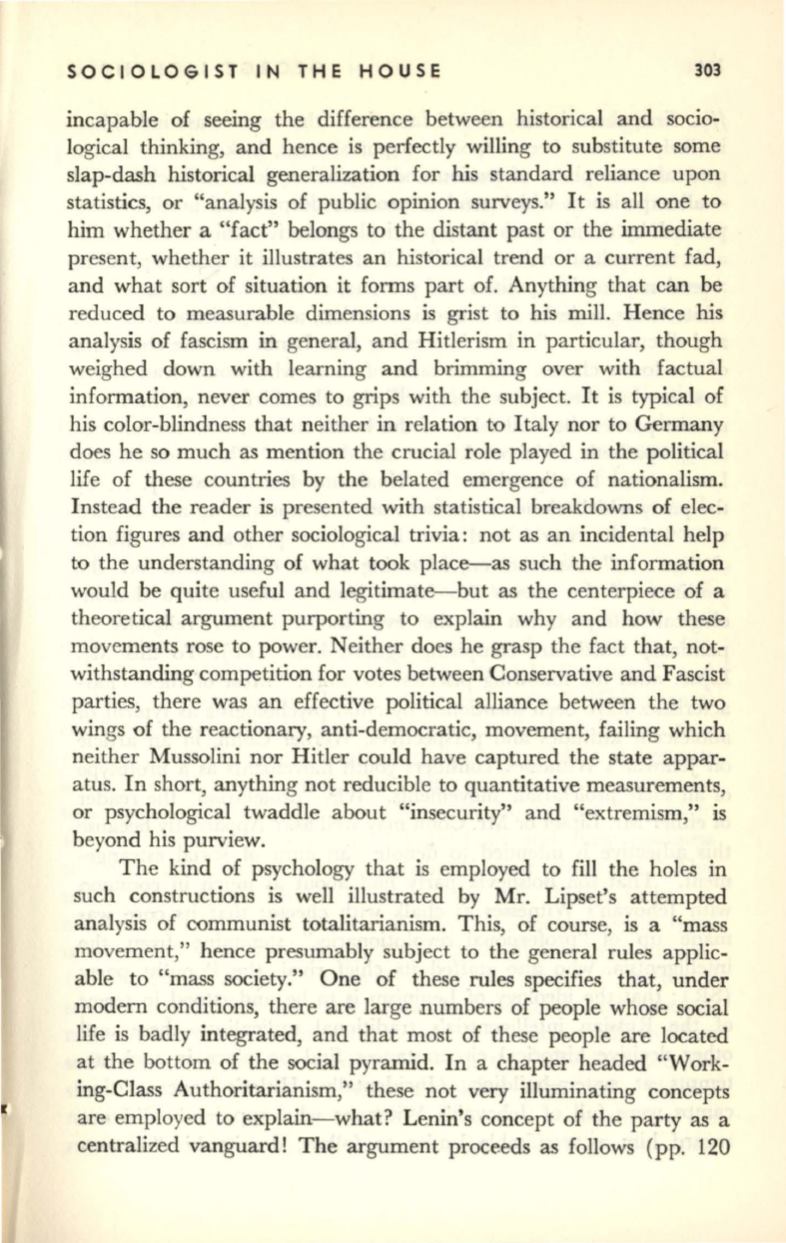
SOCIOLOGIST IN THE HOUSE
303
incapable of seeing the difference between historical and socio–
logical thinking, and hence is perfectly willing to substitute some
slap-dash historical generalization for his standard reliance upon
statistics, or "analysis of public opinion surveys."
It
is all one to
him whether a "fact" belongs to the distant past or the immediate
present, whether it illustrates an historical trend or a current fad,
and what sort of situation it forms part of. Anything that can be
reduced to measurable dimensions is grist to his mill. Hence his
analysis of fascism in general, and Hitlerism in particular, though
weighed down with learning and brimming over with factual
information, never comes to grips with the subject. It is typical of
his color-blindness that neither in relation to Italy nor to Germany
does he so much as mention the crucial role played in the political
life of these countries by the belated emergence of nationalism.
Instead the reader is presented with statistical breakdowns of elec–
tion figures and other sociological trivia: not as an incidental help
to the understanding of what took place-as such the information
would be quite useful and legitimate-but as the centerpiece of a
theoretical argument purporting to explain why and how these
movements rose to power. Neither does he grasp the fact that, not–
withstanding competition for votes between Conservative and Fascist
parties, there was an effective political alliance between the two
wings of the reactionary, anti-democratic, movement, failing which
neither Mussolini nor Hitler could have captured the state appar–
atus. In short, anything not reducible to quantitative measurements,
or psychological twaddle about "insecurity" and "extremism," is
beyond his purview.
The kind of psychology that is employed to fill the holes in
such constructions is well illustrated by Mr. Lipset's attempted
analysis of communist totalitarianism. This, of course, is a "mass
movement," hence presumably subject to the general rules applic–
able to "mass society." One of these rules specifies that, under
modern conditions, there are large numbers of people whose social
life is badly integrated, and that most of these people are located
at the bottom of the social pyramid. In a chapter headed "Work–
ing-Class Authoritarianism," these not very illuminating concepts
are employed to explain-what? Lenin's concept of the party as a
centralized vanguard! The argument proceeds as follows (pp. 120


